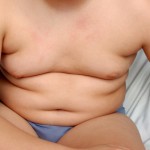With our sweeping epidemic of childhood obesity ( current estimates say over one-sixth of American kids are obese, three times the prevalence rate seen thirty years ago), it's time to take some additional steps. On Friday 11, 2011, sweeping new guidelines for childhood lipid testing were espoused by both the NIH's Nation Heart Lung and Blood Institute and The American Academy of Pediatrics. I found these, of all places, not on the websites of the two august bodies, but on the front page of the Wall Street Journal, an NPR article and in the Los Angeles Times.
The actual article in the journal Pediatrics, won't be out for two more days and should find a fair amount of opposition. Previous position papers by the AAP and the US Preventive Services Task Force have either suggested lipid studies be done in focused groups (eg. family history of heart disease or lipid disorders) or, if universally, no earlier than age 20. The CDC (actually the acronym has changed since it's now the Centers for Disease Control and Prevention), in a 2010 report, commented that a single elevated LDL cholesterol reading in a child may be found to be normal in subsequent testing.
The current recommendation panel, headed by Dr. Stephen R. Daniels, an MD, PhD who is Chairman of Pediatrics at the University of Colorado School of Medicine, is quick to avoid any suggestion of widespread statin use for children found to have high levels of "bad cholesterol," LDLs over 190 milligrams per deciliter. Another panel member, Dr. Elaine M. Urbana, director of preventive cardiology at the Cincinnati Children's Hospital Medical Center, was quoted as saying, "This documents on the fact that this generation may be the first to have a shorter life expectancy than their parents."
So go back to the facts: one-third of US kids are overweight and about 12.5 million of them are actually obese. Even here in Colorado, the thinnest state in the nation, I see some of those kids every day. We're not just talking about high schoolers; some of these fat kids are as young as two.
What's missing is a balanced diet with emphasis on fruits and vegetables and a reasonable amount of daily exercise.
Daniels comments, "...the atherosclerosis process really begins early in life." he also said, "Heart disease is the number one killer in our society...people who are able to maintain a low risk through childhood and early adulthood have a lower risk (of dying from coronary artery disease)."
From my perspective, it's our responsibility as parents and grandparents, to help prevent childhood obesity, the accompanying risk of later type 2 diabetes and the huge risk of early heart disease. I filled out a health history form yesterday and noted my mother had a heart attack at age 74 (she lived 'till 90), but ignored my father's need for an artery unclogging procedure shortly before his 90th birthday. That may be something I can put off by eating well and exercising, but that's not the focus here.
I never want to see a child or grandchild die of a heart attack in their 50s or 40s or 30s or 20s.
So blood tests between ages 9 and 11 and again between 17 and 21 make sense.
Tags: blood tests in kids, childhood obesity, cholesterol testing, Heart disease prevention


